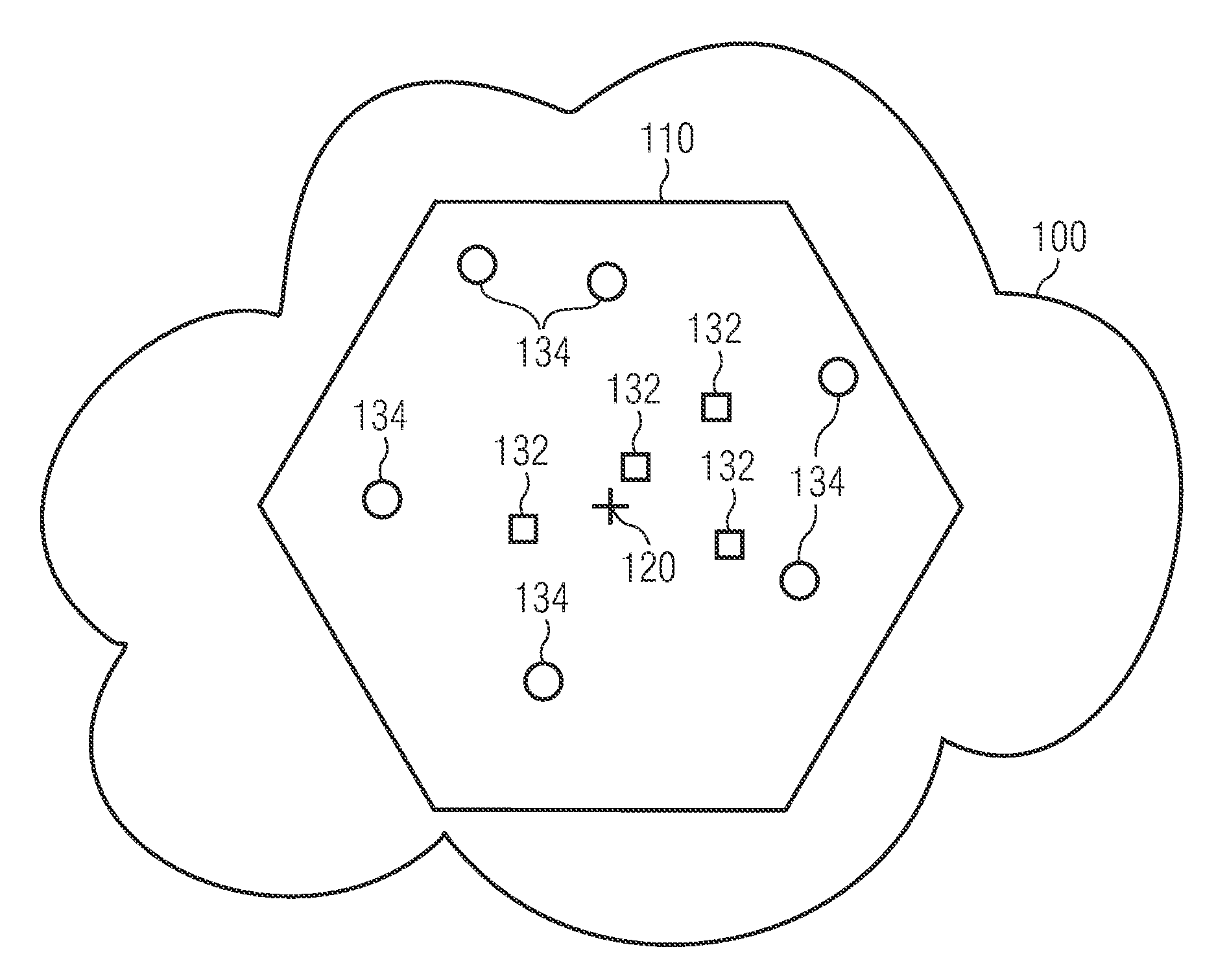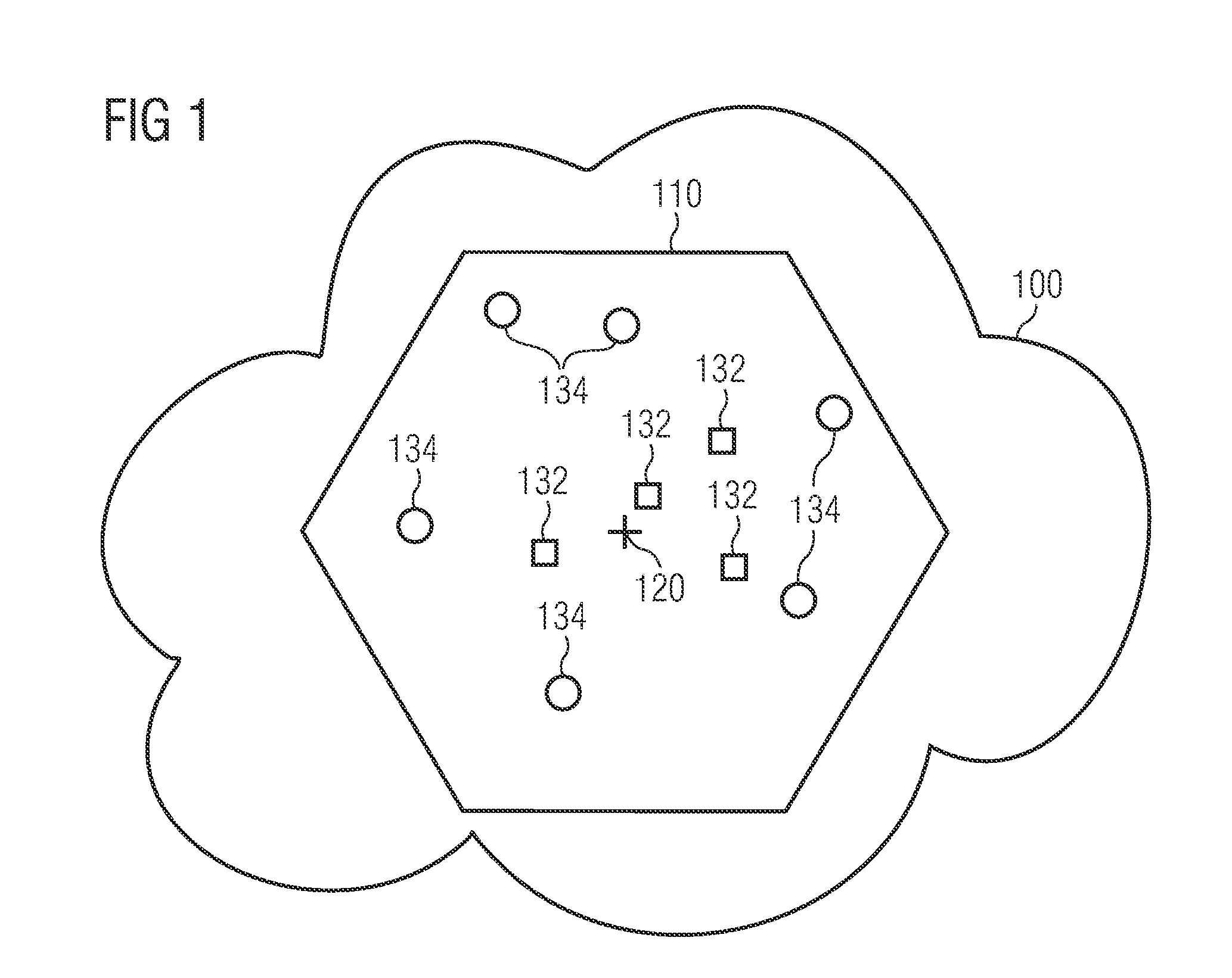Multiple Power Control Parameter Sets for Wireless Uplink Data Transmission
a technology of power control and data transmission, applied in power management, electrical equipment, radio transmission, etc., can solve the problems of significant intra-cell interference, signal transmission from different ues is not ideal, and radio signals are typically not orthogonal, so as to increase the overall performance of the relaying system and increase the spatial coverage of the lte network cells
- Summary
- Abstract
- Description
- Claims
- Application Information
AI Technical Summary
Benefits of technology
Problems solved by technology
Method used
Image
Examples
Embodiment Construction
[0071]The illustration in the drawing is schematically. It is noted that in different figures, similar or identical elements are provided with the same reference signs or with reference signs, which are different from the corresponding reference signs only within the first digit.
[0072]FIG. 1 shows a cellular telecommunication network 100. The cellular telecommunication network 100 comprises a plurality of cells, wherein in FIG. 1 only one cell 110 is depicted for the sake of clarity. The cell 110 is served by a base station 120. In the framework of Universal Mobile Telecommunications System (UMTS) the base station is called a NodeB. In the framework of Long Term Evolution (LTE) networks, the base station is typically called an enhanced NodeB (eNB).
[0073]Within the cell 110 there is located a plurality of network elements 132, 134. Each network element 132, 134 may be (a) a user equipment (UE) such as for instance a cellular phone, a personal digital assistant (PDA) or a notebook com...
PUM
 Login to View More
Login to View More Abstract
Description
Claims
Application Information
 Login to View More
Login to View More - R&D
- Intellectual Property
- Life Sciences
- Materials
- Tech Scout
- Unparalleled Data Quality
- Higher Quality Content
- 60% Fewer Hallucinations
Browse by: Latest US Patents, China's latest patents, Technical Efficacy Thesaurus, Application Domain, Technology Topic, Popular Technical Reports.
© 2025 PatSnap. All rights reserved.Legal|Privacy policy|Modern Slavery Act Transparency Statement|Sitemap|About US| Contact US: help@patsnap.com



